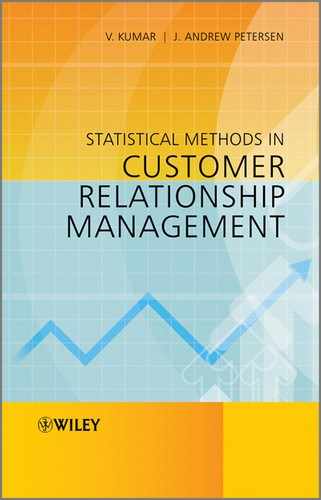2.5 The Benefits of Customer Win-back
No matter what the efforts, firms must recognize that 100% customer retention is impossible. There are factors that are simply out of a firm's control that can affect a customer and influence him/her to leave. However, customer win-back has proven to be a valuable channel through which firms can regain and even improve on previous customer profitability. Strauss and Friege define customer win-back as ‘Rebuilding the relationship with customers who explicitly quit the business relationship’ [14]. BellSouth offers a great example of successful customer win-back. When it was losing around 21 000 small-business lines per month during 2001, it implemented customer win-back strategies and managed to regain 26 000 customers per month in 2003. Bellsouth based this successful customer win-back strategy on package and price bundling offers to customers. This strategy gave customers the ability to customize their package by adding desired options (e.g., long-distance calling) and immediately obtain the lowest possible bundle price for that combination of services. As CEO Duane Ackerman noted, ‘the extended customer life more than offsets bundle discounts’ [15]. In order for firms to achieve similar success to that of BellSouth, it is important to go through several steps in the customer win-back process. First, the firm must identify which customers have defected, and who among them can still be won over. Second, it is important for the firm to identify and understand what it needs to offer the lost customers in order to secure their return to the firm. Finally, firms must measure the cost associated with winning back the customer.
Identifying the right customers to win back depends on factors such as (a) the interests of the customers to reconsider their choice of quitting, (b) the product categories that would interest the customers, and (c) the stage of customer life cycle, among others. Although reacquiring lost customers may be a hard sell, research by Marketing Metrics has found that firms still have a 20–40% chance of selling to lost customers vs. only 5–20% of selling to new prospects [16]. It is therefore important for firms to implement the necessary data modeling techniques to identify and pursue lost customers who still exhibit a strong tendency to buy.
Understanding what to offer customers in winning them back is an important step in the win-back process. A customer who defected because of a lack of a personal touch from the firm may not necessarily respond favorably to impersonal marketing communication. A great example of a firm identifying the reasons for a defection, and addressing it accordingly with an appropriate offer, can be seen in the case of Toronto Raptors' win-back of their season ticket holders after a NBA lockout. The Raptors, in association with Maple Leaf Sports and Entertainment (MLSE), used a CRM technology called ‘Ventriloquist Express’ which enables a personal voice recording to reach customers' mobile phones. The Raptors head coach Butch Carter left a voicemail for all former 4000 season ticket holders, apologizing for the lockout and promising a season of success. At that point in the message, the fan would have the option of listening to a second personal message, asking for a callback from the organization, or ending the message. The response was so strong that the Raptors implemented the same technique for non-season-ticket holders to great effect. Improvements in data mining and innovative analytic technology have also enabled companies to use data mining for win-back purposes. Merrill Lynch, power tool maker Positec, and Coastal Contacts have also used analytics for the customer win-back [17].
Measuring the cost of win-back is as important as determining who to win back and what to offer them. The cost of win-back, much like the cost of retention or churn, is juxtaposed with the customer's future profitability and value to the firm. Answering all of the above questions is an essential part in developing the right win-back strategy. However, as shown in greater detail in the coming chapters, developing the necessary models and metrics for obtaining exact quantifications decides the most appropriate strategy to win back a customer.
Customer win-back completes the set of the four major inputs in the CRM process (with customer acquisition, retention, and churn being the other three). Customer win-back is a critical component within the overall CRM strategy as it deals with customers, but there has been less research in this field than in the previous three. Chapter 7 will delve into the benefits and uses of models and metrics in the customer win-back process. Through the use of these models and metrics, we will show how managers in firms can understand the importance of regaining lost profitable customers in order to have a comprehensive and profitable CRM strategy. Some of the models explored will include: (a) adopting a lifetime value framework as a basis for customer win-back, (b) optimal pricing strategies for recapture of lost customers, and (c) a model for the perceived value of a win-back offer.
